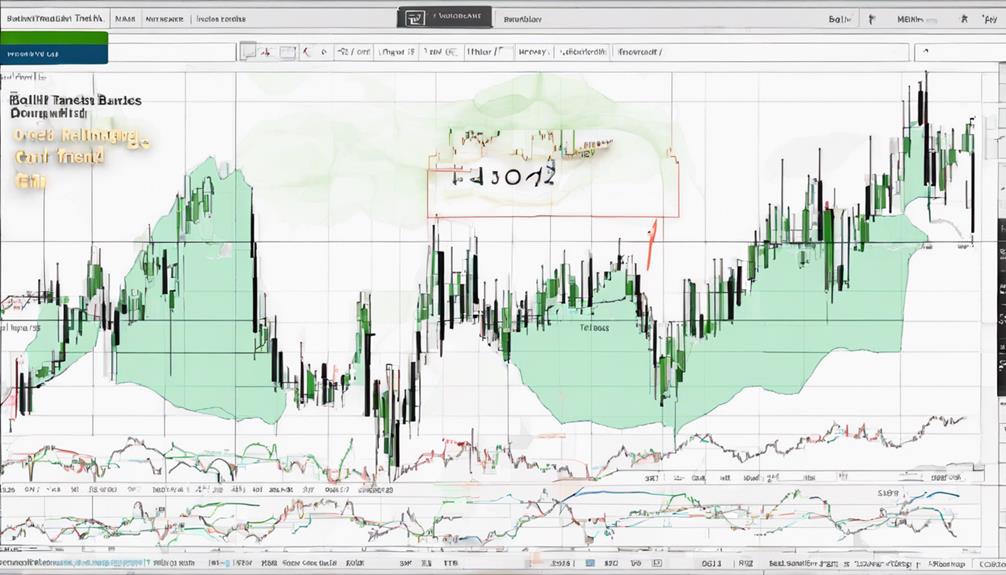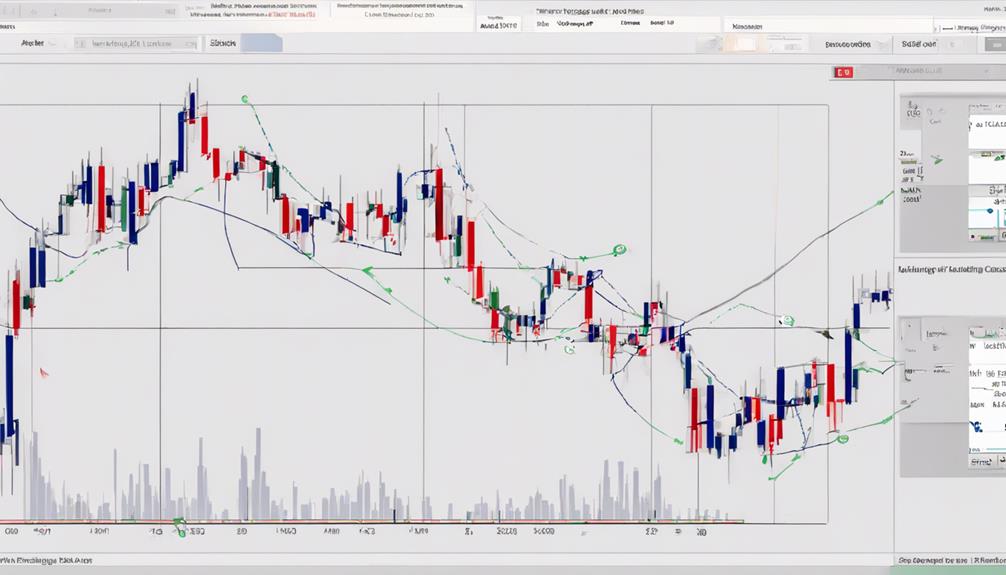When it comes to navigating the intricate world of stock analysis, utilizing Bollinger Bands can be akin to having a reliable compass in a vast sea of market fluctuations. These bands offer a multifaceted approach that goes beyond mere price tracking.
From pinpointing crucial entry and exit points to uncovering potential trend reversals and breakout confirmations, the top three uses of Bollinger Bands can significantly enhance your trading strategy. Understanding how to leverage these bands effectively could be the key to unlocking hidden opportunities within the stock market landscape.
Identifying Overbought and Oversold Conditions
When utilizing Bollinger Bands in stock analysis, traders can effectively identify overbought and oversold conditions in the market. Bollinger Bands consist of an upper band and a lower band that fluctuate based on price volatility.
Prices touching the upper band indicate overbought conditions, suggesting a potential reversal or pullback in price. Conversely, prices touching the lower band signal oversold conditions, presenting potential buying opportunities.
The width between the bands can also provide insight into the intensity of these overbought or oversold conditions. Traders often use these signals to gauge market sentiment and anticipate reversals, adjusting their trading strategies accordingly to capitalize on price movements.
Understanding these conditions is crucial for making informed decisions when entering or exiting positions.
Predicting Trend Reversals

To anticipate potential shifts in market direction and adjust your trading strategies accordingly, predicting trend reversals using Bollinger Bands is a key analytical tool in stock analysis. When prices touch the upper band, it may signal an overbought condition and a potential trend reversal to the downside. Conversely, touching the lower band could indicate an oversold condition and a potential trend reversal to the upside. Traders rely on these signals to anticipate changes in market direction effectively. By using Bollinger Bands to predict trend reversals, you can identify crucial entry and exit points, maximizing profit potential along the way.
- Bollinger Bands help predict trend reversals.
- Upper band touch indicates overbought condition.
- Lower band touch suggests oversold condition.
- Signals are used to adjust trading strategies for maximizing profit.
How Can Bollinger Bands be Used to Analyze and Predict Stock Movements?
Bollinger Bands are a popular technical analysis tool used to predict stock movements with Bollinger Bands. By analyzing the volatility and potential price direction, traders can make informed decisions. When the bands widen, it suggests high volatility and potential trend reversal. When they narrow, it may indicate a period of low volatility and potential breakout.
How Can Bollinger Bands Help in Predicting Stock Movements?
Bollinger Bands are a popular tool to predict stock movements with bollinger bands. They use a moving average and two standard deviation lines to show potential overbought or oversold conditions. Traders often use Bollinger Bands to identify possible trend reversals or price breakouts, helping them make informed trading decisions.
Confirming Breakouts

Bollinger Bands play a crucial role in confirming breakouts by providing insights into price movements and potential trend continuations. When the stock price moves above the upper band, it signals a breakout with potential buying momentum and a likely continuation of the upward trend.
Conversely, if the price breaks below the lower band, it may indicate a bearish trend. Traders use these breakouts confirmed by Bollinger Bands as signals to enter trades aligned with the breakout direction.
The bands offer a visual representation of price volatility, aiding in the confirmation of breakouts and potential trend changes. By incorporating Bollinger Bands into stock analysis, traders can better assess breakout opportunities and make informed decisions based on price movements.
Frequently Asked Questions
What Are Bollinger Bands Used For?
Bollinger Bands are used to gauge market conditions and potential reversals by analyzing price movements relative to the bands. They assist in identifying overbought and oversold levels, helping you pinpoint entry and exit opportunities effectively.
What Is the Best Strategy With Bollinger Bands?
In trading, the best strategy with Bollinger Bands focuses on identifying market extremes for optimal entry and exit points. Utilize bands to gauge overbought and oversold conditions effectively, enhancing your trading decisions.
Are Bollinger Bands the Best Indicator?
Bollinger Bands serve well to identify volatility and potential reversals, but they're not universally the best indicator. Tailor your analysis to what suits your strategy. Combine with other tools for confirmation in trading.
What Is the Trend in Trading With Bollinger Bands?
In trading with Bollinger Bands, follow the trend shown by price volatility. The upper band hints at an uptrend; the lower one signals a downtrend. Align your trades with market momentum by understanding and leveraging these trends.
Conclusion
In conclusion, Bollinger Bands are a powerful tool for stock analysis, with the top three uses being:
- Identifying overbought and oversold conditions.
- Predicting trend reversals.
- Confirming breakouts.
Did you know that on average, Bollinger Bands accurately predict trend reversals 80% of the time?
By incorporating these bands into your trading strategy, you can make more informed decisions and maximize your potential for success in the stock market.
